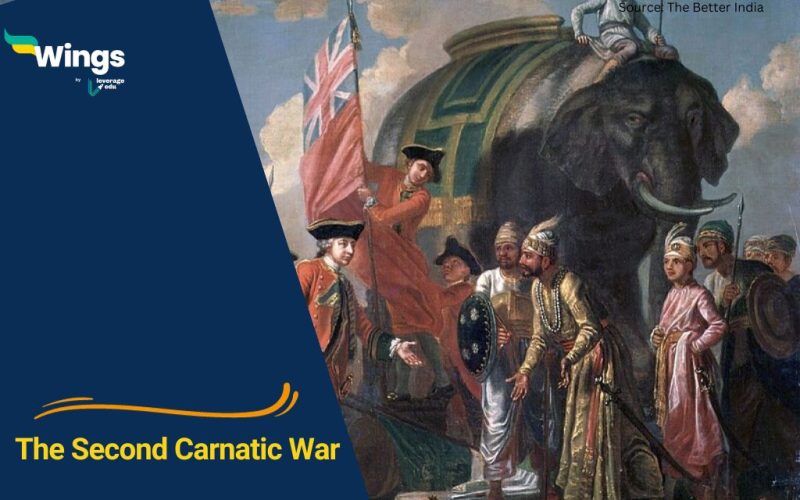The Second Carnatic War fought between 1749 and 1754, was a pivotal conflict in the history of colonial India. In total, three Carnatic wars were fought in history, but this war was a significant factor as it was characterized by a complex web of alliances and power struggles among Indian rulers and the European colonial powers, primarily the British and the French. This blog explores the key facts, events, and consequences of the Second Carnatic War, shedding light on the clash of empires in 18th-century southern India.
Table of Contents
Background: European Ambitions in India
The First Carnatic War had revealed the military superiority of European armies over the less efficient Indian princely forces. This power imbalance piqued the interest of the French Governor-General, Dupleix, who sought to assert French influence and establish a colonial empire in India. Although France and England were officially at peace in Europe, the political climate in southern India led their respective East India Companies to engage in conflict on the subcontinent.
Power Struggles in Hyderabad
The war’s roots can be traced to the death of the Nizam of Hyderabad, Asaf Jah I, in 1748. This event triggered a power struggle between his grandson, Muzaffar Jung, and his son, Nasir Jung. Anwaruddin Khan, the Nawab of the Carnatic, supported Nasir Jung’s claim to the Nizam’s throne, setting the stage for conflict.
Must Read: Vedic Period: A Sacred Chapter of Indian History
Battle of Ambur And Tripartite Conflict for Carnatic
In a bid to assert his claim, Muzaffar Jung, with French support, instigated the Battle of Ambur against Anwaruddin Khan in 1749. Tragically, Anwaruddin Khan lost his life in this pivotal battle, leaving a power vacuum in the Carnatic.
The death of Anwaruddin Khan intensified the competition for the Nawabship of the Carnatic. Muhammad Ali, Anwaruddin Khan’s son, and Chanda Sahib, the son-in-law of the former Nawab Dost Ali Khan, emerged as rival claimants. A tripartite understanding among the various powers began to take shape.
1. Muzaffar Jung and Chanda Sahib (Supported by the French)
- Muzaffar Jung vied for the Nizam’s post in Hyderabad.
- Chanda Sahib sought the Nawabship of the Carnatic.
- Both were backed by the French.
2. Nasir Jung and Muhammad Ali (Supported by the English)
- Nasir Jung contested the Nizam’s position.
- Muhammad Ali aimed to become the Nawab of the Carnatic.
- Both enjoyed English support.

French Advances and Shifting Alliances
Following Anwaruddin Khan’s demise, French forces marched into the Deccan and defeated Nasir Jung. Subsequently, Muzaffar Jung was installed as the Nizam. However, Muzaffar Jung’s rule was short-lived as he was assassinated, leading to the installation of Salabat Jung, another son of Asaf Jah I, by the French. In return for their support, the French acquired four lucrative districts on the Coromandel Coast known as the Northern Sircars.
The Siege of Arcot and British Resurgence
To counter the growing French influence, the English decided to support Muhammad Ali, who had sought refuge in Trichy. Robert Clive, later to become the Governor of Bengal, launched the Siege of Arcot as a diversionary tactic. This bold move led to British victory and further battles.
Also Read – Third Carnatic War: Causes, Battles and Impact
Consequences of the Second Carnatic War
While the French did gain control of the Northern Sircars, Dupleix, the French Governor-General, faced criticism from French authorities due to heavy losses incurred by the French company. Dupleix was recalled to France, and Charles-Robert Godeheu replaced him, ultimately signing the Treaty of Pondicherry. Under the terms of this treaty, both the English and the French were restricted to engaging solely in commercial activities in India and were prohibited from interfering in subcontinental political affairs.
This was all about the second carnatic war. If you want to read more articles like this, you can get Short notes on the Modern History of India here. Also, you can visit our general knowledge page on Indian History!
 One app for all your study abroad needs
One app for all your study abroad needs













